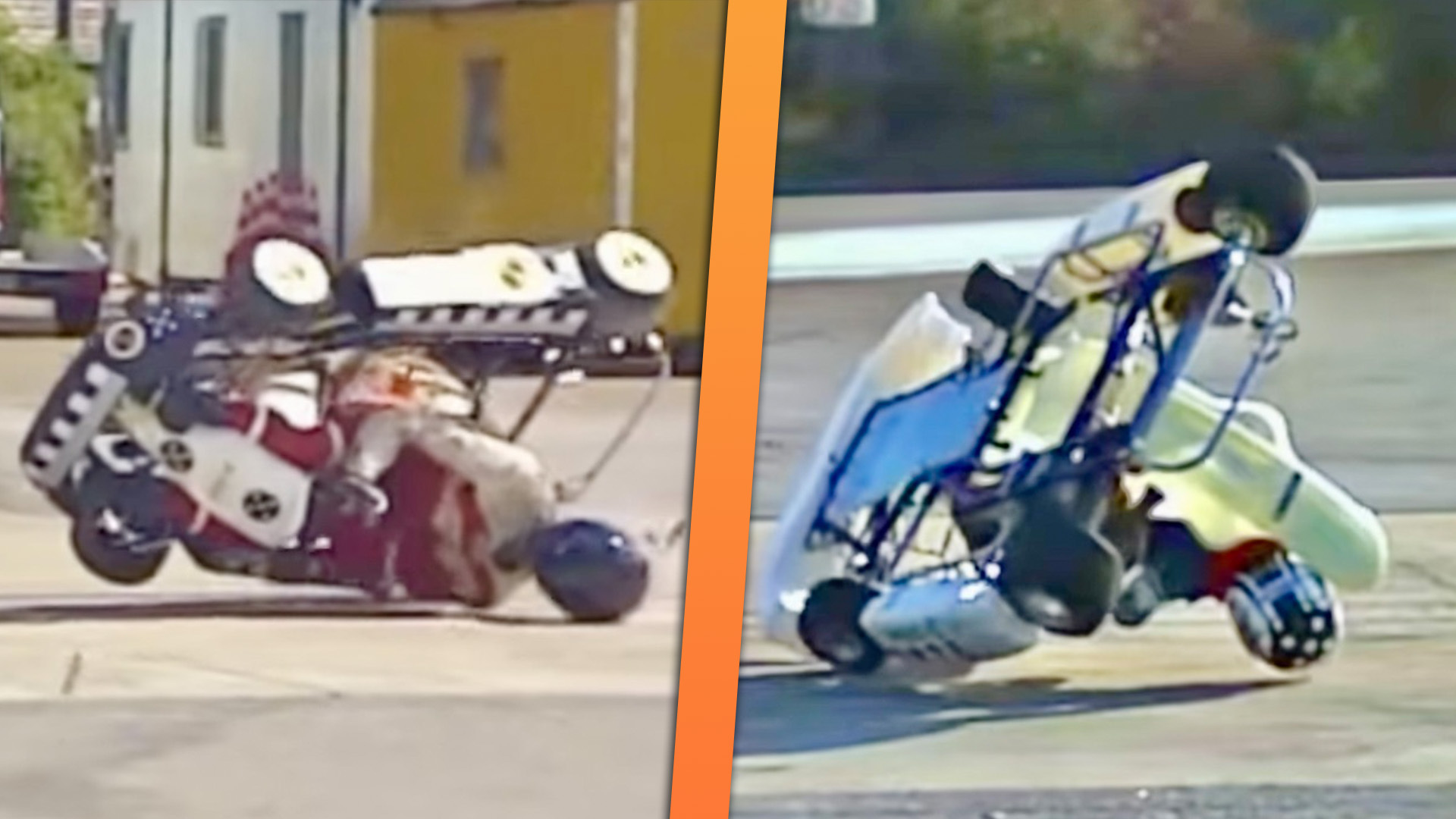

There are many different kinds of go-karts out there. Some cost $200, sit on homemade frames, and run on lawnmower engines, while others cost $20,000, ride on Italian chassis, and use high-performance handbuilt motors. However, there’s one common issue among them all: they all lack any sort of rollover protection.
A video recently popped up on a karting Facebook page I’ve followed for a long time, Karting Emotion and Passion, showing a rollover crash test of sorts. The roughly minute-long clip features two different racing karts—the fancy, expensive kind—being forced into a rollover crash via an offset ramp. Aboard each kart is a crash test dummy wearing a racing suit and helmet. The point of the test is to show the difference between a traditional kart seat and a newer one with a considerably higher backrest. In theory, this backrest is designed to protect the driver’s head and neck in the case of a rollover crash.
Now, I’m not a safety expert but I spent most of my childhood racing karts, from TAGs to shifters and even dual-engine machines. From short sprint tracks in Texas to big-boy circuits like Road Atlanta, I’ve seen and experienced a few crashes, including the rollover kind. So, as you can imagine, watching this video brought back a few memories.
The first crash test shown in the video involves a kart with a traditional seat. The kart is launched into the air and quickly begins rotating left until it comes crashing down on the dummy’s shoulder and, eventually, its head. The kart with the higher seat then repeats the same test and, to the naked eye, the results are pretty much the same. The kart rotates and lands on the driver’s head while the top of the seat flexes back and continues to drag along the tarmac.
At first glance, I didn’t think there were many noticeable differences between the two. However, the more I thought about it, the more I found this specific test very peculiar, if not flawed. It appears that the dummy drivers used in these tests were affixed to their karts, unlike real drivers. This aspect, in my own opinion, completely alters the results of the tests.
The first thing I remember about my first (of two) rollover crash is my helmet smacking hard on the ground. The second thing I remember is my body slipping out of the seat and tumbling down the track while all I could think was, “holy shit I’m going to get hit by another kart.” I remember hearing my kart flipping in the distance until it came to a stop about 20 feet away. I also remember the pungent smell of gasoline and chain oil.
In this test, the dummies’ hands look to be attached to the steering wheel, so the dynamics of the crash are completely different, arguably invalidating the results. Sure, the initial head smack is similar to the real deal, but from that moment on, the physics are flawed because the body stays in the kart. But what about the seats?
In my opinion, more can be done to improve rollover safety in karts. My guess is that eventually some sort of Halo device will trickle down to them. But again, I’m not convinced this test actually proves anything. Any sort of device that can keep the driver’s head, neck, and shoulders from being exposed with no line of defense in a rollover should be tested in conditions simulating real life as closely as possible. That includes what happens after the driver leaves the seat.

Several high-back kart seats exist and are already in use throughout professional karting, though mostly in the lower categories—think kids five to 11 years old. Even this crash test video shows some of these seats applied to FA (Fernando Alonso) karts, which are widely used worldwide. I could be wrong, but I believe the footage shown in the clip is from Alonso’s actual karting school in Spain—which made headlines back in 2017 when an 11-year-old aspiring karter died in a racing crash.
I did quite a bit of digging to see if the FIA has published any sort of safety reports comparing karting seats, but I couldn’t find a thing. The Facebook caption for the video reads, “increased protection for karters in roll-over incidents has been a key target for the FIA and its member clubs,” though I was not able to actually trace this back to any FIA report or press release.
Either way, this video serves as a reminder that karting is dangerous, and safety improvements on that front are long overdue.
Contact the author at jerry@thedrive.com